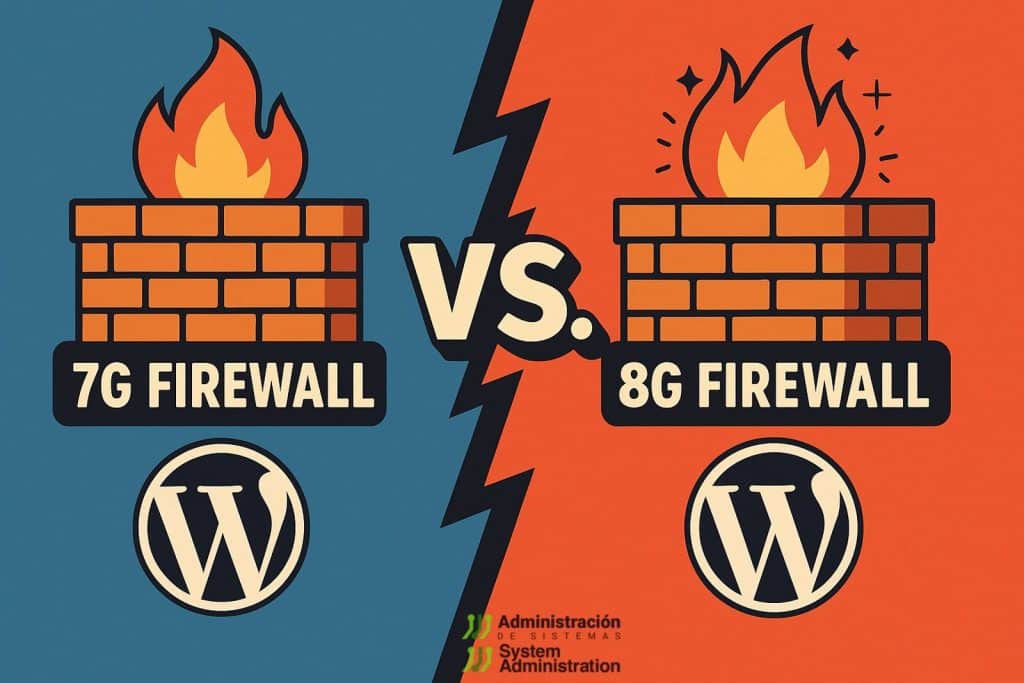Securing the application layer remains a critical concern for system administrators. In Linux-based hosting environments, lightweight firewalls like 7G and 8G have become effective solutions for defending web servers against common threats, without introducing overhead or complex configurations.
In this article, we’ll break down the key differences between the 7G and 8G firewalls, focusing on their deployment within xCloud.host environments. We’ll also assess how each performs when paired with NGINX and OpenLiteSpeed (OLS), two of the most widely used web servers in cloud and VPS setups.
Overview: What Are the 7G and 8G Firewalls?
Both firewalls were developed by Jeff Starr as security-focused rule sets for Apache and NGINX. They are designed to block malicious requests using pattern-based detection without the need for additional software or processing power.
While 7G provides robust protection against standard threats like SQL injection and XSS, 8G is its logical evolution, offering enhanced filtering and better coverage against modern attack vectors.
Feature Comparison Table
| Feature | 7G Firewall | 8G Firewall |
|---|---|---|
| File Size | ~12 KB | ~14 KB |
| Threat Protection | XSS, SQL injection, hotlinking, basic bots | Includes all 7G rules plus RCE and advanced evasion |
| Use Case | Lightweight, basic web protection | More aggressive and modern security approach |
| Location in Server | /etc/nginx/conf.d/7g-firewall.conf (NGINX) | .htaccess or OLS config files |
| WordPress Compatibility | Fully compatible | Fully compatible but may block some plugin behavior |
| Integration on xCloud | One-click deploy via xCloud panel | Also deployable via xCloud with enhanced rule sets |
| Log Access | Logged in NGINX | Logs available via OpenLiteSpeed or server CLI tools |
Technical Differences and Operational Considerations
1. Enhanced Threat Coverage
The 8G Firewall adds protection against Remote Code Execution (RCE), suspicious user agents, malformed HTTP headers, and other advanced exploits that aren’t fully covered in the 7G ruleset. This makes it particularly suitable for sites handling sensitive data or exposed to high levels of automated traffic.
2. Performance and Resource Usage
Both 7G and 8G are extremely lightweight. However, 8G includes more rules and conditions, which marginally increases processing requirements during request handling. This difference is negligible in most production servers but could be relevant for very high-traffic environments.
3. Server Compatibility
- NGINX: 7G integrates seamlessly via standard configuration files. It’s ideal for admins seeking a minimal yet effective solution that doesn’t rely on
.htaccessfiles. - OpenLiteSpeed (OLS): 8G, with its
.htaccess-based ruleset, is perfectly aligned with OLS, allowing per-site customization and granular control of blocking policies.
4. Ease of Deployment with xCloud.host
The xCloud.host control panel allows quick activation of both firewalls, providing a GUI-based management layer to enable/disable rules, view logs, and apply updates without needing to touch configuration files manually.
When to Choose Each Firewall
- Choose 7G if:
- You run lower-risk projects with moderate traffic.
- You want a no-frills, efficient firewall setup.
- You prioritize speed and simplicity over exhaustive threat coverage.
- Choose 8G if:
- You manage eCommerce, SaaS, or client-sensitive platforms.
- You require stricter security policies and proactive protection.
- You need per-site
.htaccessflexibility or run OLS.
Both options are fully compatible with WordPress and other PHP-based CMS platforms. However, 8G includes tighter rules, so testing compatibility with third-party plugins is recommended before production deployment.
Final Thoughts
Implementing 7G or 8G firewall rules on Linux servers managed by xCloud.host represents a smart and resource-efficient way to improve your application-layer security. While 7G remains a reliable option for many websites, 8G is the preferred choice for administrators dealing with higher exposure, regulatory compliance, or more complex attack surfaces.
Combined with tools like Fail2ban, ModSecurity, and server-level hardening, both firewalls can form the basis of a multi-layered defense strategy. Thanks to xCloud.host‘s simplified deployment interface, system administrators can quickly implement, test, and monitor these firewalls without disrupting operations.
If you’re looking to boost your server’s resilience with a lightweight, transparent, and cost-effective approach to web security, adopting 8G may be your next step.
Free illustration by AI free images. Source: Colorvivo, comparativa Firewall 7G vs 8G

